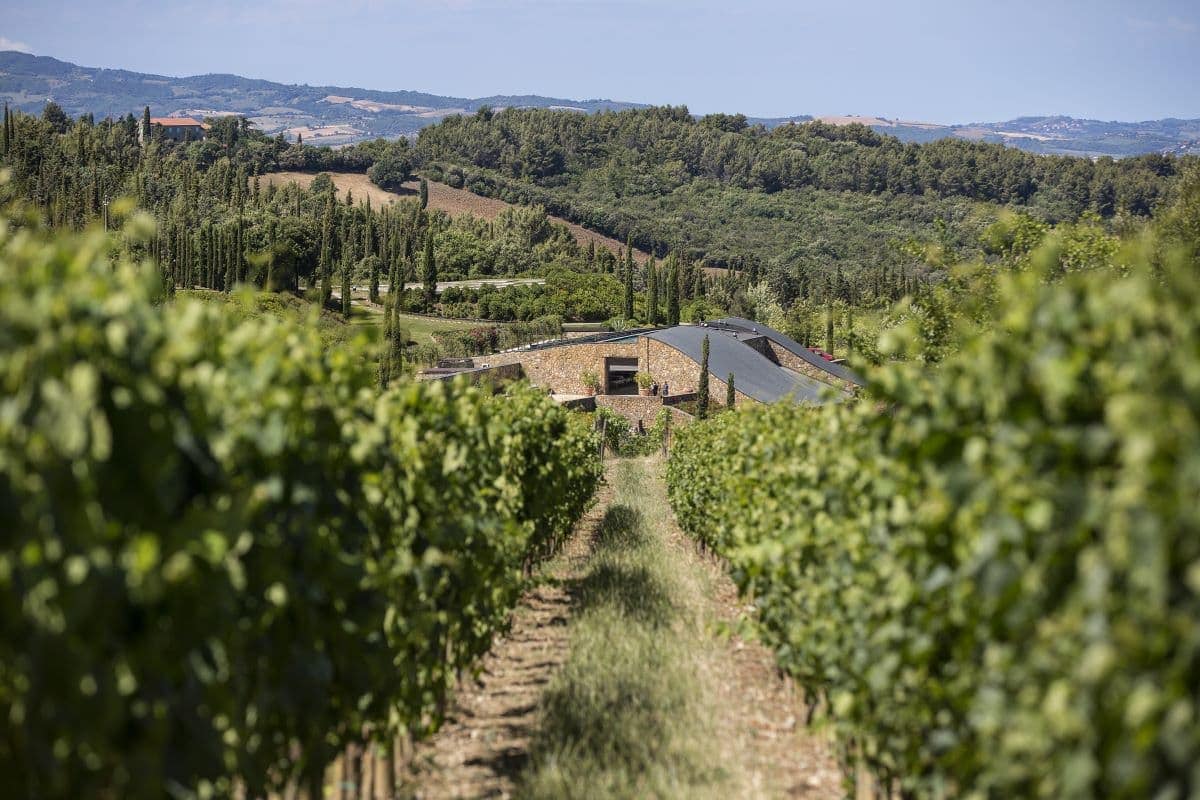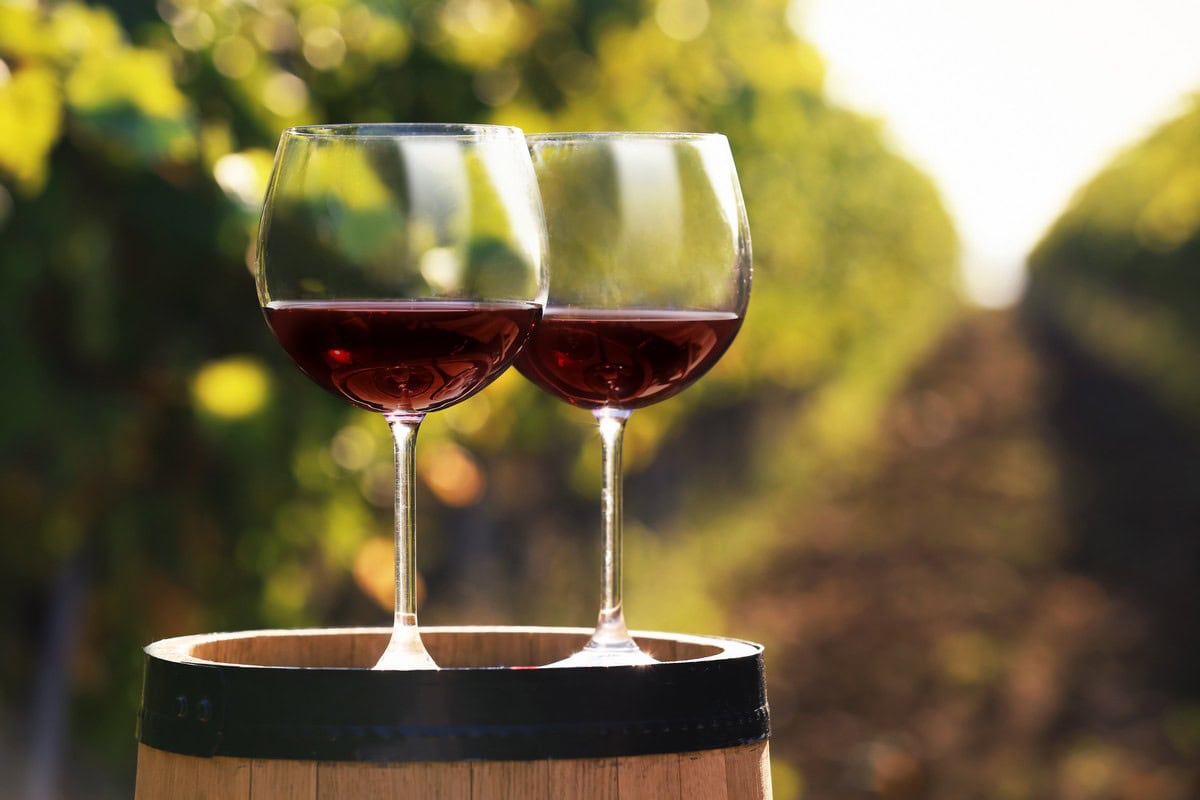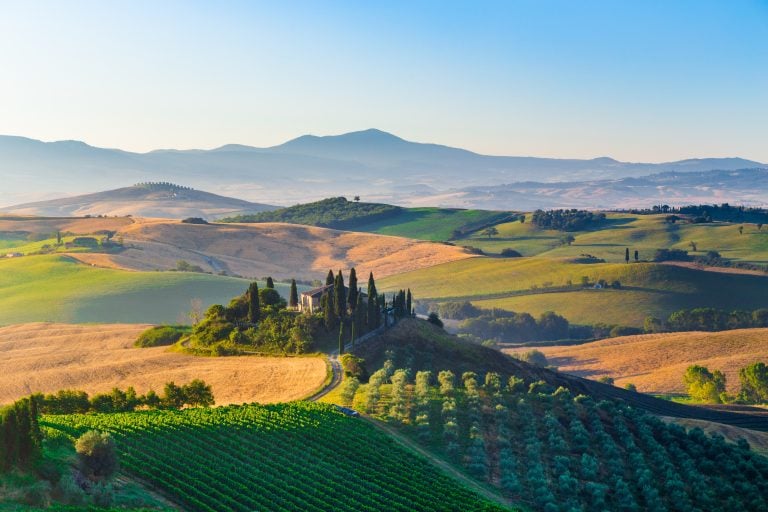Tuscany boasts 11 DOCGs and 41 DOCs, making it one of the most important regions for Italian wine. Prestigious and renowned territories coexist with lesser-known areas. Mentioning Brunello di Montalcino or Nobile di Montepulciano, for instance, almost everyone knows what we're referring to. However, when we talk about Orcia DOC, we need to provide more information to clarify some aspects.

Val d'Orcia: the territory
It's no coincidence we mentioned Montalcino and Montepulciano. The Orcia territory is practically nestled between these two denominations. Located on the hills southeast of Siena, this area joined the UNESCO World Heritage list in 2004. To understand why, just take a glance at the photos online (and perhaps visit it too): Val d'Orcia showcases a profound and centuries-old harmony between man and environment. The roads lined with cypress trees, the fields, vineyards, olive groves, farmhouses, and medieval villages all reflect the awareness of the locals (and their ancestors) in transforming the landscape without distorting or damaging it. The hills are gentle, reaching a maximum altitude of 700 meters above sea level, but on average, the heights are around 300 meters. The soils are quite heterogeneous but predominantly limestone and clay.

The Orcia Denomination and the wines produced
The denomination covers twelve municipalities: the entire territories of Buonconvento, Castiglione d’Orcia, Pienza, Radicofani, San Quirico d’Orcia, and Trequanda; and parts of the municipalities of Abbadia San Salvatore, Chianciano Terme, Montalcino, San Casciano dei Bagni, Sarteano, and Torrita di Siena.
Orcia DOC encompasses various types: starting with Orcia Bianco (mainly based on Trebbiano Toscano), then moving on to Orcia Rosato. However, the real stars of the denomination are the reds, dominated by Sangiovese. In Orcia, Sangiovese must be present at least 60%, a percentage that rises to 90% in the Orcia Sangiovese type. Both these types can also bear the "Riserva" mention, when, in the case of Orcia, the wine is aged for at least 24 months (12 of which in wooden barrels); for Orcia Sangiovese, the aging period increases to at least 30 months (24 of which in wood). The lineup concludes with Vin Santo, usually made from Trebbiano Toscano and Malvasia Bianca Lunga.
The best Orcia DOC Wines
Around forty wineries produce Orcia DOC wines. Some of these have been reviewed in the Gambero Rosso 2024 Italian Wine Guide. Here are the wines from the denomination that impressed us the most:
Orcia Capitoni Riserva '19 by Marco Capitoni, a wine with good personality, featuring full and clear fruity aromas and a juicy, intense taste, marked by energetic and savory tannins.
Orcia Sangiovese Frasi Riserva '19, offers inviting balsamic aromas and a solid, gritty, and savory palate.
The almond oval, a mystical symbol and the logo of Podere Forte, perfectly represents the spirit of this Val d'Orcia estate, established in 1997 by entrepreneur Pasquale Forte. The winery, assisted by a laboratory, is designed to meet the company's philosophical needs and extends over five floors, mostly underground. Sangiovese is the star in both Petrucci Anfiteatro 2018 and Petrucci Melo '18, revealing tertiary notes of tobacco and leather, followed by blackberry jam. The palate is austere and polished, with a truly intriguing finish.
Orcia Sangiovese Giovesone Riserva '19 by the Mastrojanni family, a red with a fascinating tone and refined execution, proving that "good blood doesn't lie."
Orcia Scorbutico '20 by Poggio Grande, possesses earthy and floral aromas with smoky accents, introducing a savory, reactive, and fragrant palate. The more intense but equally well-crafted Orcia Sangiovese Sesterzo '19 features aromas dominated by lush fruitiness.
Tenuta Sanoner consistently offers wines with clear stylistic finesse. Both Orcia Sangiovese Aetos '20 and the Riserva '19 version are well-executed wines, with the former standing out for its menthol and citrus touches in the aroma and a delicate, agile, and sprightly palate.


 US tariffs: here are the Italian wines most at risk, from Pinot Grigio to Chianti Classico
US tariffs: here are the Italian wines most at risk, from Pinot Grigio to Chianti Classico "With U.S. tariffs, buffalo mozzarella will cost almost double. We're ruined." The outburst of an Italian chef in Miami
"With U.S. tariffs, buffalo mozzarella will cost almost double. We're ruined." The outburst of an Italian chef in Miami "With US tariffs, extremely high risk for Italian wine: strike deals with buyers immediately to absorb extra costs." UIV’s proposal
"With US tariffs, extremely high risk for Italian wine: strike deals with buyers immediately to absorb extra costs." UIV’s proposal Meloni: "Tariffs? If necessary, there will be consequences. Heavy impact on agri-food sector"
Meloni: "Tariffs? If necessary, there will be consequences. Heavy impact on agri-food sector" The Government honours the greats of Italian cuisine, from Bottura to Pepe. Massari: "Thank you, Meloni, the only one who listened to us"
The Government honours the greats of Italian cuisine, from Bottura to Pepe. Massari: "Thank you, Meloni, the only one who listened to us"








